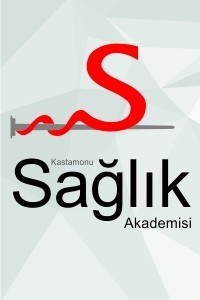Kraniosinostoz Cerrahisinde Anestezi ve Transfüzyonun Değerlendirilmesi: Retrospektif Çalışma
anestezi, kanama, transfüzyon, Pediyatrik
Evaluation of Anesthesia and Transfusion in Craniosynostosis Surgery: A Retrospective Study
anesthesia, hemorrhage, transfusion, Pediatric,
___
- Ali A, Basaran B, Yornuk M, Altun D, Aydoseli A, Sencer A, Akinci IO. (2013). Factors influencing blood loss and postoperative morbidity in children undergoing craniosynostosis surgery: a retrospective study.Pediatric neurosurgery 49 (6), 339-46. https://doi.org/10.1159/000368781
- Bajwa SS, Kulshrestha A. (2014). Craniofacial and maxillary anomalies: Anaestetic implications and management. J Sci Sov 41:73-78. https://doi.org/ 10.4103/0974-5009.132819
- Balderas V, Bhore R, Lara LF, Spesivtseva J, Rockey DC. (2011).The hematocrit level in upper gastrointestinal hemorrhage: safety of endoscopy and outcomes. Am J Med. Oct;124(10):970–76. https://doi.org/10.1016/j.amjmed.2011.04.032
- Bayık M, Uluhan R, Heper R. (2015).XVIII. Ulusal Kan Merkezleri ve Transfüzyon Tıbbı Kurs Kitabı. İstanbul: Yatay Ofset. Bellew M, Chumas P. (2015).Long-term developmental follow-up in children with nonsyndromic craniosynostosis. J. Neurosurg Pediatr 16 (4): 445-51.https://doi.org/10.3171/2015.3.PEDS14567
- Choi JW, Lim SY, Shin HJ. (2016).Craniosynostosis in Growing Children: Pathophysiological Changes and Neurosurgical ProblemsJ Korean Neurosurg Soc. 59 (3): 197-203.https://dx.doi.org/10.3340%2Fjkns.2016.59.3.197
- Cornelissen M, Ottelander B, Rizopoulos D, Hulst R, Molen AM, Horst C, Delye H, Veelen ML, Bonsel G, Mathijssen I.(2016). Increase of prevalence of craniosynostosis. Journal of Cranio-Maxillofacial Surgery. 44(9):1273-79.https://doi.org/10.1016/j.jcms.2016.07.007
- Czerwinski M, Hopper RA, Gruss J, Fearon FA. (2010). Major morbidity and mortality rates in craniofacial Surgery: An Analysis of 8101 major procedures. Plast Recons Surg. 126(1): 181-86.https://doi.org/10.1097/prs.0b013e3181da87df
- Çeltikçi E, Börcek AÖ, Baykener MK. (2013). Kraniyosinostozlar. Türk Nöroşirurji Dergisi.23:132-37.
- Forvet PA, Lin EE, Fiadjoe JE, Sussman EM , Pruitt EY, Zhao H et al. (2013). Evaluation of central venous pressure monitoring in children undergoing craniofacial reconstruction surgery. Anesth Analg. 116:411-20.https://doi.org/10.1213/ane.0b013e31827008e6
- Goobie SM, Meier PM, Pereira LM, McGowan FX, Prescilla RP, Scharp LA, Rogers GF, Proctor MR, Meara JG, Soriano SG, Zurakowski D, Sethna NF.(2011). Efficacy of tranexamic acid in pediatric craniosynostosis surgery. Anesthesiology 114: 862- 71. https://doi.org/10.1097/aln.0b013e318210fd8f
- Han RH, Nguyen DC, Bruck BS, Skolnick GB, Yarbrough CK, Naidoo SD, Patel KB, Kane AA, Woo AS, Symyth M.(2016). Characterisation of complications associated with open and endoscopic craniosynostosis surgery at single institution. J Neurosurg Pediatr 17(3):361-70.https://doi.org/10.3171/2015.7.peds15187
- Jacquot C, Delaney M. (2018). Pathogen-inactivated blood products for pediatric patients: blood safety, patient safety, or both? Transfusion.58(9):2095-2101. https://doi.org/10.1111/trf.14811
- Jain A, Sponseller PD, Newton PO, Shah SA, Cahill PJ, Njoku DB, Betz RR, Samdani AF,Bastrom TP, Marks MC, Harms Study G. (2015). Smaller body size increases the percentage of blood volume lost during posterior spinal arthrodesis. J Bone Joint Surg Am.97(6):507–11https://doi.org/10.2106/jbjs.n.01104
- Ko JM.(2016). Genetic syndromes associated with craniosynostosis. J Korean Neurosurg Soc 59(3):187-91. https://doi.org/10.3340/jkns.2016.59.3.187
- Lee J, Radulescue V, Porhomayon J, Pourafkari L, Arora P, Dosluoglu HH, et al. (2015). The role of perioperative transfusion on long-term survival of veterans undergoing surgery. Ann Surg. Jan;261 (1):104–10. https://doi.org/10.1159/000497826
- Meier J, Filipescu D, Kozek-Langenecker S, Llau Pitarch J, Mallett S, Martus P, et al. (2016). Intraoperative transfusion practices in Europe.. Br J Anaesth. Feb; 116 (2) :255–61.https://doi.org/10.1093/bja/aev456
- Nargozian C. (2004). The airway in patients with craniofacial abnormalities. Paediatr Anaesth 14: 53-59.DOI: 10.1046/j.1460-9592.2003.01200.x
- Nguyen TT, Lam HV, Phillips M, Edwards C, Austin TM. (2015). Intraoperative optimization to decrease postoperative PRBC transfusion in children undergoing craniofacial reconstruction. Paediatr Anaesth 25(3): 294-300. DOI: 10.1111/pan.12600
- New H, Berryman J, Bolton-Maggs P, Cantwell C, Chalmers EA, Davies T, Gottstein R, Kelleher A, Kumar S, Morley SL, Stanworth SJ. (2016). British Committee for Standards in Haematology Guidelines on transfusion for fetuses, neonates and older children. Br J Haematol. 175:784–828. https://doi.org/10.1111/bjh.14233
- Pieters BJ, Singhal VK. (2012). Does early administration of fresh frozen plasma (FFP) in the operating room decrease blood loss and transfusion needs? Plast Reconst Surg. 130:67-70.https://doi.org/10.17827/aktd.24404
- Raja RA, Khemani VD, Sheikh S, Khan H. (2011). Craniosynostosis: Early recognition prevents fatal complications. J Ayub Med Coll Abbottabad 23: 140-43.
- Thomas K, Hughes C, Johnson D, Das S. (2012). Anesthesia for surgery related to craniosynostosis: a review. Part 1.Pediatr Anesth. 22:1033–41. TT, Lam HV, Phillips M, Edwards C, Austin TM.(2015). Intraoperative optimization to decrease postoperative PRBC transfusion in children undergoing craniofacial reconstruction. Paediatr Anaesth 25(3): 294-300. https://doi.org/10.1111/j.1460-9592.2012.03927.x
- White N, Bayliss S, Moore D. (2015). Systematic review of interventions for minimizing perioperative blood transfusion for surgery for craniosynostosis. J Craniofac Surg. 26: 26–36. https://doi.org/10.1097/SCS.0000000000001108
- Van Uitert A, Megens JH, Breugem CC, Stubenitsky BM, Han KS, de Graaff JC. (2011). Factors influencing blood loss and allogeneic blood transfusion practice in craniosynostosis surgery. Paediatr Anaesth 21:1192–97. https://doi.org/10.1159/000368781
- Yayın Aralığı: Yılda 3 Sayı
- Başlangıç: 2016
- Yayıncı: Esra DEMİRARSLAN
Ebru ÖZTÜRK, Erhan ELMAOĞLU, Fatma KARASU, Hasan ÇAM
Kraniosinostoz Cerrahisinde Anestezi ve Transfüzyonun Değerlendirilmesi: Retrospektif Çalışma
Nermin KILIÇARSLAN, Ayşe Neslihan BALKAYA
Duygu KORKEM, Hamide Elif ÖZTÜRK, Nurgül DÜRÜSTKAN ELBAŞI
Bir Çimento Fabrikasında Toz Seviyelerinin Belirlenmesi ve Çalışan Sağlığı Üzerine Etkileri
Birsel Canan DEMİRBAĞ, Havva ÖZTÜRK, İlknur KAHRİMAN
Çocuk Sahibi Olabilme: Kültür ve Geleneksel Uygulamalar
Şahika ŞİMŞEK ÇETİNKAYA, Kafiye EROĞLU
Hemşirelik Öğrencilerinin Danışmanlık ve İletişim Becerileri
Duygu KURT, Eylem PASLI GÜRDOĞAN
Ebelik Öğrencilerinin Liderlik Yönelimleri/Leadership Tendencies of Midwifery Students
Rana CAN, Rabiye ERENOĞLU, Hatice TAMBAĞ, Semra AKKÖZ ÇEVİK
Hemşirelerin Telefon Danışmanlığı: Sistematik Derleme
Nedret TEKİN KAYA, Özlem ÖRSAL
Ayşe ÖZDEMİR, Pınar YILDIZ GÜLHAN, Zeynep ARABACI, Ergün HASGÜL
